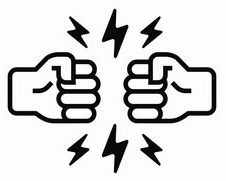What size copper tubing is used for propane?
What size copper tubing is used for propane?
1/2″
1/2″ OD x 100′ Yellow Polyethylene Jacketed Copper Tubing for LP Gas Service.
What type of copper tubing do you use for propane gas?
copper is safe for LP, but not recommended for natural gas. due to “concerns over corrosion and flaking of copper tubing, copper is not allowed for use on natural gas work in some localities” (see reference) home depot says “Use M (red)-rated copper for indoor gas distribution”
Can propane be run in copper tubing?
In 1999, the International Association of Plumbing & Mechanical Officials (IAPMO) designated that copper tubing and fittings are allowable for gas-distribution systems, including propane.
What size pipe do I need for propane?
Section 1, supplying outlets A and B, or 35 cubic feet per hour requires ½ inch pipe. Section 2, supplying outlets A, B, and C, or 94 cubic feet per hour requires 1/2 inch pipe. Section 3, supplying outlets A, B, C, and D, or 230 cubic feet per hour, requires 3/4 inch pipe.
What kind of hose can I use for propane?
3/8″ ID Thermo Rubber High Pressure Propane/Natural Gas Hose with 3/8″ 45 Degree Female Flare Swivels on each end. Versatile hose can be used for any Propane or Natural Gas Appliance connection.
How deep are LP gas lines buried?
12 to 18 inches
Depths range from 12 to 18 inches underground, depending on vehicular traffic. The reason for this depth requirement is simple – the earth, dirt, sand or whatever is covering the line needs to adequately protect the underground gas line from damage.
How do you connect copper tubing to propane?
Bury the copper pipe lines at least 12 inches underground if you use them for an outside application. Bury the lines at least 18 inches underground if there is or may be vehicle traffic above them. Attach the modified or new propane line to the tank, and turn on the gas.
What is the difference between Type K and Type L copper tubing?
Each type represents a series of sizes with different wall thicknesses. Type K tube has thicker walls than Type L tube, and Type L walls are thicker than Type M, for any given diameter. All inside diameters depend on tube size and wall thickness.
How do you size a propane line?
Add approximately 5 feet of pipe per fitting. LP Example: A machine with a burner that requires 440,000 BTU would need a 1” pipe for a 20′ long run. Natural Gas (NG) flow is given in thousands of BTU/hr. – One cubic foot of LP gas – 1000 BTU Nominal pressure at the burner for Natural Gas is 3.5” of water column.
Can you use a hydraulic hose for propane?
Hydraulic Hose is not approved for use with LPG. Although the pressure of the hose is far more than adequate, there are chemical compounds in LPG that will deteriorate the Hydraulic hose from within.
How big of a connection do I need for an ice maker?
Using two crescent wrenches, here’s what to do if you already have a hard copper line to the back without a shut off valve anywhere in site. You can buy a kit that has the parts you’ll need, 1/4 inch connectors with a 6 foot, 1/4 inch supply hose, that has the 1/4 nuts on both ends.
How big is an ice maker supply hose?
You can buy a kit that has the parts you’ll need, 1/4 inch connectors with a 6 foot, 1/4 inch supply hose, that has the 1/4 nuts on both ends.
How do you cut a copper line for a ice maker?
Carefully do it yourself or get a plumber to cut the copper line with a copper pipe cutter, a nice clean cut, a couple of inches this side of where the line comes out of wall or cabinet (as long as it’s not crimped, you’re ok to cut it).
How big is a GE ice maker connection?
It looks more like 1/8 inch, but a 1/8 inch valve doesn’t fit either, although it is very close. Where can I find information about water pipe sizes, there must be some standard? My fridge is a GE CFCP1NIZSS: http://products.geappliances.com/ApplProducts/Dispatcher?REQUEST=SpecPage&Sku=CFCP1NIZSS
